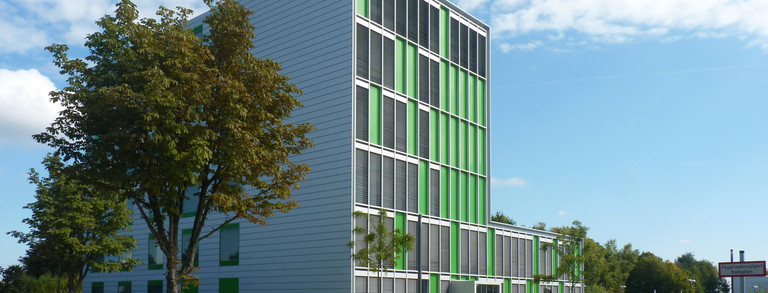Thesis List
Description: Human motion generation has made significant improvements in recent years. However, these generation models are restricted to plain environments or 3D point cloud environments. The goal of the thesis is to integrate and evaluate neural networks for goal-oriented human motion generation (such as Wandr) into simulation environments such as Unity. (MA)
Beschreibung: In kombinierten Location und Routing Problemen ist die Aufgabe Standorte zu eröffnet und darauf basierend ein Routing zu finden. Beispielsweise kann eine Firma einen Standort für ihr Lager wählen und muss diesen dann beim Versenden ihrer Produkte beachten.
Dieses Problem ist NP-schwer und damit nicht in angemessener Zeit optimal lösbar. Dies gilt jedoch nur, da die Standortwahl ganzzahlig getroffen werden muss (ein Standort kann nur komplett eröffnet sein oder nicht, aber nicht teilweise). Indem wir dies jedoch erlauben, ist es möglich das Problem optimal zu lösen. Da wir jedoch keine halben Warenhäusern bauen können, müssen wir diese fraktionalen Werte zu ganzzahligen Werten runden oder als Zufallsvariablen für Randomisierte Algorithmen interpretieren.
In dieser Abschlussarbeit soll das Konzept der LP Relaxierung wie beschrieben genutzt werden um Algorithmen für Hub Covering Probleme zu finden. Diese sollen implementiert und verglichen werden.
Vorwissen in zumindest einiger folgender Konzepte ist hilfreich: Graphen, Standortprobleme, Routing (z.B. Vehicle Routing, Traveling Salesperson Problem o.ä.), Implementierung (Python), Heuristik (MA)
How to use the Application Form
-
Enter your personal details
-
Fill in your First Name, Last Name, and Email Address (use your university email)
-
-
Select the type of work
-
Choose one option: Project Work, Bachelor Thesis, or Master Thesis.
-
-
Specify your thesis topic
-
Make sure that the title of the thesis matches the type of work!
-
In the field “Which thesis would you like to apply for?”, copy and paste the title or topic of your thesis. If the thesis is not offert in the list above your application will not be considered. If you have an external Thesis topic, in collaboration with a company fill in the proposed thesis topic. Ensure that the topic covers a scientific question/goal.
-
-
Upload required documents
-
Transcript of Records: Upload your academic transcript (PDF)
-
Letter of Motivation: Upload your motivation letter (PDF)
-
(optional) Upload your CV (PDF)
-
-
Submit your application
-
Review all fields and make sure everything is complete
-
Click the green “Send” button to submit your form
-
-
Confirmation
-
You should now be forwarded to another conformation side if not please contact our technical support team via e-mail
-
* Required field

